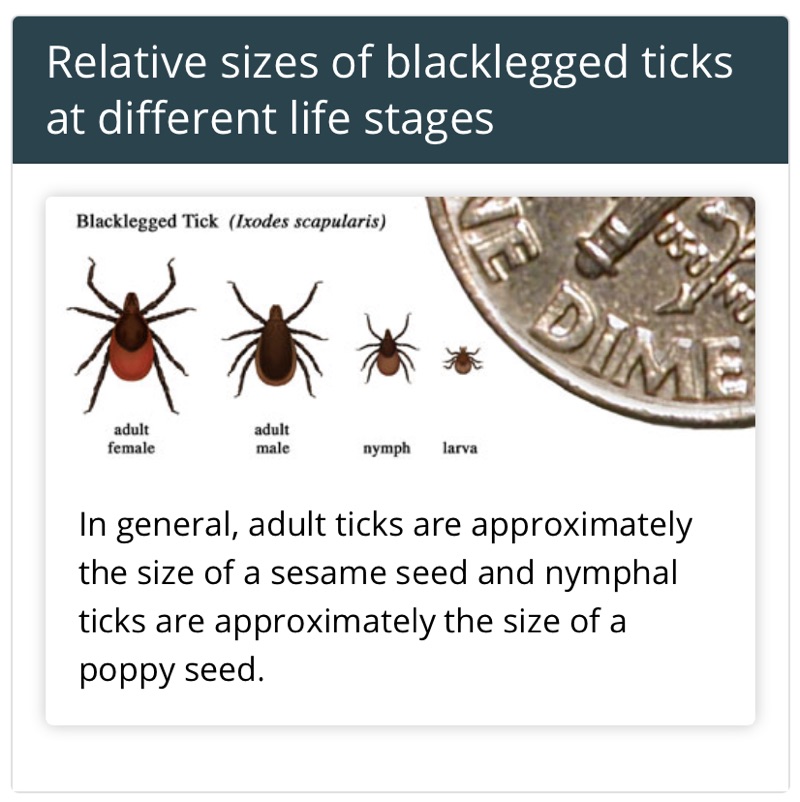I’m surprised that this is the first rap song about Brood X I’ve heard so far.
Brood X-ellence, a rap about Brood X by EntoGeek. It’s pretty good.
I’m surprised that this is the first rap song about Brood X I’ve heard so far.
Brood X-ellence, a rap about Brood X by EntoGeek. It’s pretty good.
On May 23rd I made it out to eastern Mercer County, New Jersey to too look for Brood X cicadas. Specifically, I made it out to West Windsor Township, its famous neighborhood Gover’s Mill, and nearby Plainsboro Township.
Overall the emergence in the area was underwhelming. Some holes, some exuvia (skins), and even fewer cicadas. Throughout the area, I heard individual calls by Magicicada septendecim and Magicicada cassini, but no choruses. I was there between noon and 5 pm. The temperature was somewhere between 85 and 90 degrees fahrenheit. The soil and air were very dry.
The best location was Van Nest Park in Grover’s Mill (in West Windsor). There, every suitable tree had a dozen or more exit holes around its roots. Most trees had at least 12 exuviae on them, and a few had cicadas crawling in them.
Van Nest Park is best known for the War of the World’s monument on its grounds. In this photo, Orson is sharing a mic with a cicada:
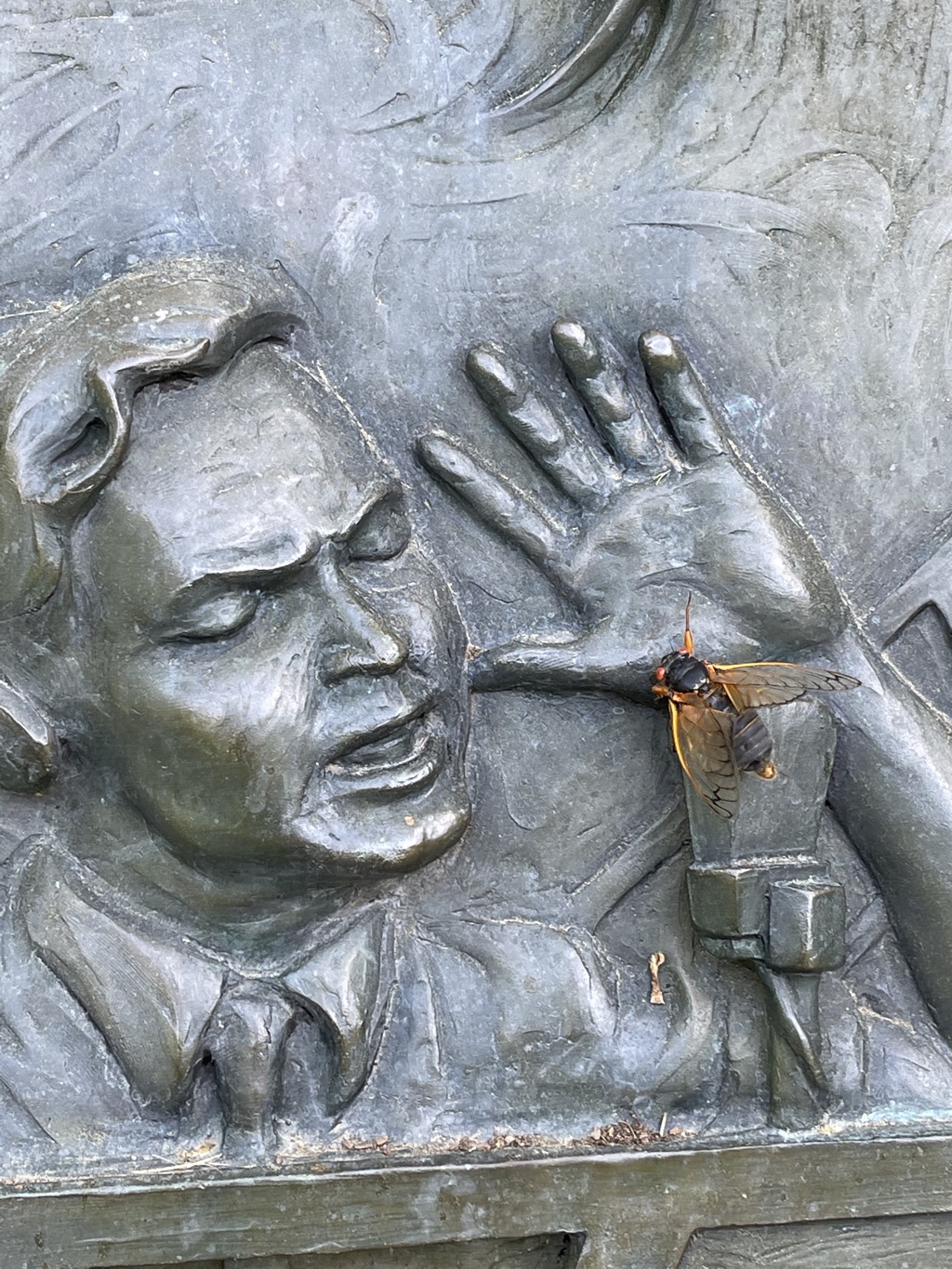
It breaks my heart to see cicadas with shriveled wings. This one was in Van Nest Park:
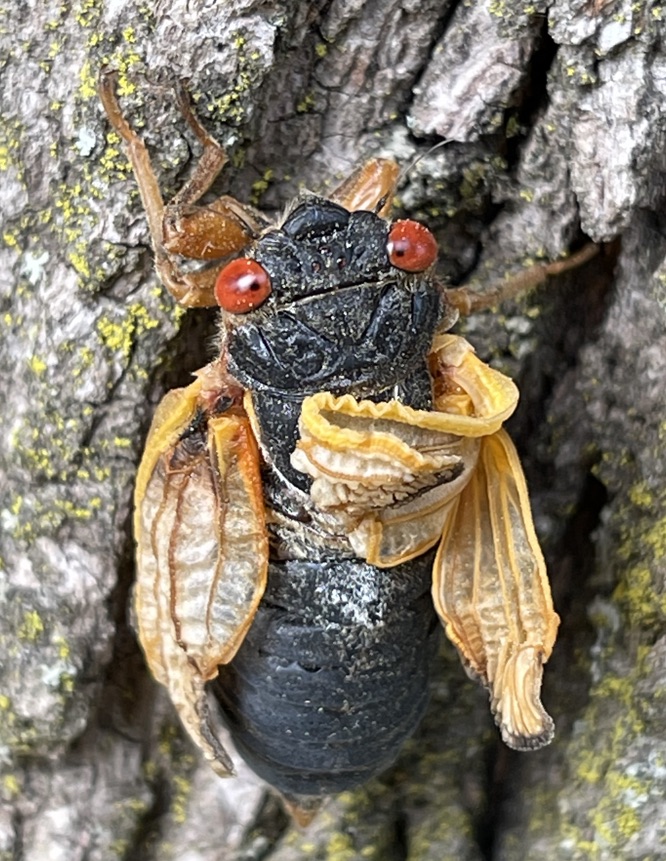
Ronald Roger’s Arboretum, also in West Windsor, had plenty of exit holes along its hiking trails, but very few exuviae, and only one audible singing Magicicada septendecim.
In Plainsboro, the Lenape Trail offered nothing in terms of cicadas, but I could hear cicadas singing nearby. Waters Edge Park had exuviae hanging from tree leaves, but no visible adult cicadas, and a few audible M. septendecim. I did see one fisherman using a cicada for bait.
Either the Brood X emergence was very light in this area, and most were wiped out by birds, or it is still early. I will do my best to check this location again to be sure.
Picture semi-related:

Snappy Tomato Pizza has once again transformed into Snappy Cicada Pizza.
More information here, posted by Ed on another post.
Here you go — this will help: Snappy Cicada Pizza Video: https://youtu.be/p86ch6qVfHU
We have just announced our partnership with The Christ Hospital to celebrate the birth of the cicadas and newborns at the hospital — see press release here: https://www.globenewswire.com/NewsRoom/ReleaseNg/4194884
It’s been 17 years since Cincinnati last saw the Brood X cicadas, and there’s no doubt that their return has caused a lot of “buzz” around the Tristate! The Christ Hospital wanted to do something to commemorate this wild and rare time and we can’t think of a better partner to help us than Cincinnati’s own Snappy Tomato Pizza. Remember that jingle from the 80s? While there was never an actual Snappy Cicada Pizza, Snappy still brushes it off just for fun every cicada resurgence!
This time around, The Christ Hospital and Snappy Tomato Pizza are teaming up to start a new tradition. To help welcome newborns and cicadas, each baby born at both The Christ Hospital Mt. Auburn and Liberty Township locations over the next few weeks will receive a free, limited-edition, “All the Buzz” onesie! Parents will also get a coupon for a free pizza (cicadas, unfortunately, not included) and Snappy swag generously donated by Snappy Tomato Pizza!
Here’s some previous incarnations: Snappy Cicada Pizza Jingles.
A new song/parody video sent to us by Tracy Mayle: Cicada Serenade (parody) Brood X Spring 2021 Emergence! Enjoy.
Just in time for Brood X, here’s another cicada book for kids: Cicada Symphony by Lisa Kobman.
I haven’t read the book, so I cannot give my opinion. Lisa says she consulted with Gene Kritsky when writing the book.
Here are some details from Amazon.com:
This book is the perfect learning tool for teaching children about cicadas. It explains the complicated and fascinating life cycle of the 17-year cicada (Brood X) in a way a preschooler and elementary-aged child can understand and connect with. Children will be drawn in by the beautiful, vivid illustrations, humor, and compelling storyline. The rhyming language should help ease anxiety about these amazing bugs and could even inspire a sense of wonder and excitement about cicadas for children and adults alike. It is the perfect addition to your science/nature collection. Don’t be surprised if after reading this book, readers of all ages head outside to check out the cicadas!
This one is PG-13 (R?) rated. It’s a Cicada-themed horror comedy movie podcast called Cicada Madness!!! Check it out! It reminds me of a 1980s horror movie and comedy, with some Rob Zombie mixed in.
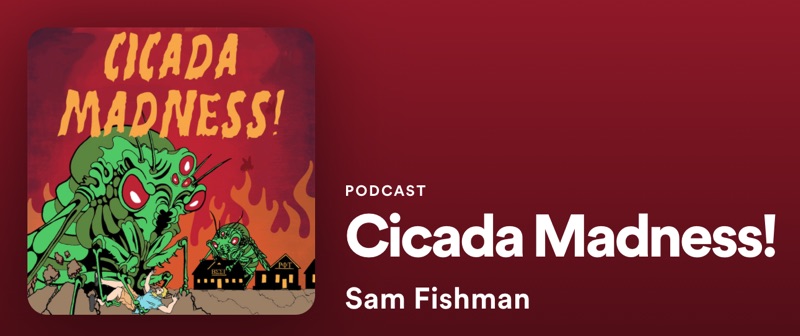
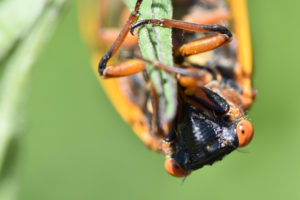
I’m going to use this list for a video…
The next major emergence is Brood XIV in 2025.
Cicadas “eat” plant sap, specifically xylem. So, technically they don’t eat anything, they drink it. Bacteria in their gut digests it into nutrients the cicadas recieve nourishment from. More about what cicadas eat.
A cicada is an insect belonging to the order Hemiptera (true bugs), suborder Auchenorrhyncha, superfamily Cicadoidea and families Cicadidae (the vast majority of cicadas) or Tettigarctidae (only two species). They are best known for the song most males make, and for the long period of time they spend underground. They are found on every continent except for Antarctica. Same answer for the question “what is a cicada bug” or “what are cicadas” or “what is cicadas” or “what is cicada”?
The answer depends on the species. Three species of Magicicada live 17-years (documented up to 22). A species of Okanagana is suspected to live as long as 19 years. But some cicadas can live as few as two years, like Diceroprocta apache. Read more about how long cicadas live. If you mean, how long do they live above ground — anywhere from a few seconds (if a bird gets them) to about a month, depending on the species.
If you mean the 17-year periodical cicadas, they’ll be parts of Delaware, Georgia, Illinois, Indiana, Kentucky, Maryland, Michigan, North Carolina, New Jersey, New York (extinct or nearly so), Ohio, Pennsylvania, Tennessee, Virginia, West Virginia, and Washington D.C. Read a lot more about Brood X. Worldwide cicadas will be found on every continent other an Antartica!
Most of their lives cicadas live underground, growing larger by drinking tree sap from plant roots. Most cicadas have short lives above ground, living on and amongst the plants (usually trees) whose roots they drank from.
Cicada individuals last above ground anywhere from a few seconds to about a month at max (maybe longer in captivity). This depends on the species. A periodical cicada emergence typically lasts about 5 to 6 weeks — the key is they don’t all emerge at once. Some annual cicadas can be found 4 months a year in the same location, like Neotibicen tibicen.
Assuming we’re taling about Brood X periodical cicadas, about 5 to 6 weeks — could be shorter depending on the weather. They’re less active the first and last week, so 3 to 4 weeks of crazy cicada behavior max.
Magicicada cicadas come out once every 17 or 13 years. Brood X is every 17 years. There are 12 Broods of 17 year cicadas, and 3 Broods of 13 year cicadas. Mathematically speaking, each year there is an approximately 78% chance a Brood is emerging somewhere in the US. If we’re taking about other types of cicadas, they’ll be around late-spring and throughout the summer. Other species range from just 2 years, to as many as 19!
You can pronounce cicada however you like, but the most popular ways are ci-KAY-duh or si-KAH-duh. I prefer si-KAH-duh because that’s how they say it in Australia and that’s how William T. Davis pronounced it, and he had the largest collection of cicadas in North America.
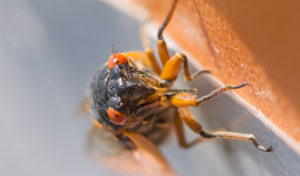
If you mean Brood X, they’ll be around 4-6 weeks — 3 weeks of peak screaming cicada behavior. Other types of cicadas are typically around 1-4 weeks depending on the species.
Depends on the species, but cicadas are best known for the long time the spend underground, and then the month or so they spend screaming above ground. Specifically, underground they dig tunnels, create cells, drink from roots, and grow. Above ground they emerge from the ground, molt, harden and inflate their wings, crawl, fly, scream, mate, lay their eggs in plant branches, and die.
Trillions, Billions. Not all in one place. You might find a few dozen to thousands in your yard or local park.
Depends on the species, the answer is everything with a mouth will eat a cicada. Yes people too. Some will eat so many cicadas, that they get tired of eating them, which is a strategy of cicada survival called predator satiation! Certian species of cicadas, like summertime Morning Cicadas are the favorite prey of Cicada Killer Wasps. There’s even a fungus that consumes cicadas, backend first: Which fungus attacks Magicicadas? Massospora cicadina.
Depends on the species, but about a month in captivity based on observations made by friends, and slightly less or dramatically less in nature. Dramatically less because everything is trying to eat them.
Depends on the species, but they sound like old TV or radio static, a broken air conditioner, a U.F.O. from a science fiction movie, a car alarm, a broken alarm clock, a power tool… Visit the cicada sounds page and listen for yourself.
Cicadas are found on every continent but Antarctica. There’s few countries and islands where you won’t find them, like Greenland or Bermuda, but most of the world has at least one species. In the USA, periodical cicadas are found in most states east of the Rocky mountains. Visit the Brood page to see where.
They’re insects, and like most insects, as adults, they have wings (4), six legs, an abdomen, a thorax and a head. Their head features five eyes (2 large compound eyes, and 3 tiny simple eyes), antennae, and a beak for drinking. Here’s a picture:
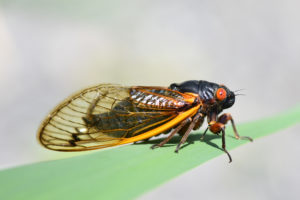
Most male cicadas make sound by rapidly vibrating a membrane called a tymbal. It’s like a tiny drum. See a picture of a tymbal. Some females & males make sounds by flicking their wings. There’s also a third way cicadas make sounds.
Periodical cicadas are about 1 to 1.5 inches long. Other species are as small as a half-inch or as long as 3 inches with 8-inch wingspans.
Cicadas come out of the ground to mate with other cicadas and create the next generation of cicadas. That is it.
In our tradition of letting you know about cicada-themed songs, here’s “Cicada Love Call” by Toby T. Swift.
From Broadway World:
In “Cicada Love Call,” Swift’s ex-wife shows up on his front porch, “just like a bug,” 17 years after leaving him for another man. Now she wants to get back together with him, but he’s having none of it.
Love is strange — kinda like cicadas.
It’s available on Amazon, Spotify and Apple / iTunes.
Hey! There’s a new cicada book out for Kids. Looks fun. The Cicada Olympics: Engaging Kids in Live Insect Activities. by Cynthia ‘Cindy’ Smith, Ph.D. & Richard Grover. It is available on Kindle or Paperback from Amazon.
About the book:
With two periodical broods set to emerge this spring, now is the perfect time to start planning educational events and activities that celebrate this fascinating natural phenomenon. The Cicada Olympics book is packed with 14 easy-to-implement engaging activities, student worksheets you may copy, and sample letters to parents, providing you with everything you need to organize successful cicada events at parks, schools, neighborhoods and communities. From interactive games and races to exoskeleton exploration, these activities are designed to spark curiosity, promote learning, and foster deep appreciation for these gentle giants.
The Cicada Olympics book offers a comprehensive toolkit designed to help you create a fun, informative and memorable experience for learners of all ages. 62 pages.
In 2004 I hosted a highly successful school Cicada Olympics event where kids rotated through 12 activity stations with their own personal cicada. It was magical! To start, each child decorated a small wire-handled takeout food container and then selected a male or female cicada, which they named and carried to all the events. Kids were laughing, cheering, comparing with friends and learning. I was encouraged by the teachers, parents and volunteers to capture the activities in a book so that that other parents, educators and youth leaders could easily recreate them. The book details all the materials needed and ways to teach, even if you’re terrified of bugs. For example, a STEM engineering challenge is detailed, where kids build a small boat which they ‘race’ across a kiddee pool with their cicada as captain.
Periodical Cicadas are the best teaching tools. They’re big, slow, they don’t bite and they mostly stay put while you hold them. Kids tell me that if you stare into their pointy faces, they kind of look like they’re smiling. My goal in writing the book was to help youth leaders, educators, parents, and guardians to easily put on an educational event or engage children in individual activities with cicadas. In addition to examining anatomy, mimicking calls with kazoos and building pyramids out of exoskeletons, integrating cicadas into learning activities is an awesome way to help kids become very comfortable with insects, retain a great deal of life history knowledge and have more awareness about insects’ roles in the environment.
Since I was a kid, I have been fascinated with insect and animal behavior. I remember as a 2nd grader, collecting loads of ladybugs and moths in a metal coffee can and (much to my mother’s horror), releasing them in my bedroom to show her how I ‘trained’ them all to fly to the windows. For my master’s degree, I focused on bird behavior, working on projects ranging from seagull feeding behavior in landfills to bowerbird displays in Australia.
I love the intrigue of the periodical cicada life cycle. What exactly are they doing underground for 13 or 17 years? Just sucking on tree roots seems rather boring to me. Are they communicating with each other? “Hey, are you going to the big party in the trees? I can’t wait!” Do they interact with the grubs and centipedes underground? Do they ever sneak up to the surface years too early, check out the aboveground scene and then go back down to wait? I have observed stragglers coming out in their ‘wrong’ year and quickly getting carried away by birds.
Brood IV near Manhattan, Kansas while I was attending Kansas State University working on my Wildlife Biology degree. I’ve experienced Brood X in Northern VA in 2004 and 2021.
One evening in May 2013 when Brood II emerged in the woods near my home in Virginia, I sat, my back against an old beech tree, as 100s of nymphs crawled out of their soil tunnels. Nymphs crawled up my shoes, up my legs and when they reached my bent knees – the highest point, they turned around a few times and then crawled back down to the ground to find a better ‘tree’.
When I brought neighborhood kids to witness the emergence, at first, they were squeamish and squealing as pairs of tiny toes touched and tickled their legs. Once the children got comfortable and noticed how determined the cicadas were to walk upwards, (and that the insects did not care one iota about them), the wonder questions flowed like floodwaters: Do you think he likes me? How high will they climb? Are their red eyes full of blood? Can they see me? Can I take them home as a pet? That would hurt me if my back split open, does it hurt when they molt? Can they still breath when they molt? What are those white hairs in the shells? etc…
Emotional experiences like this are unforgettable.
Yes! I always anticipate the songs of the annual cicadas. I love how they crank up the volume on hot summer days. I’m very interested in insect-plant associations. I strategically plant flowers in my yard for insect observation and photography. Today for example, I watched small bees (Ceratina species) clearing out tunnels in last year’s elderberry stems.
Experiences with live organisms are memorable. Last week at one of my environmental education programs, 7th graders were collecting data on water chemistry in a stream. While testing the water, they spotted a dragonfly nymph molting on a stem. Immediately, all the children crowed around to watch. When they met up later with their teachers, none of them discussed the amount of dissolved oxygen they recorded, but all of them chattered about the bald eagle that flew by, how the dragonfly cracked out of its exoskeleton and how cute the baby turtle was that they held.
When I train K12 teachers and ask about their most memorable science experiences, most smile and share stories about farm trips, raising rabbits and chicks, finding a box turtle, holding a snake and visiting public aquariums.
Take your kids outside and often. Examine the different plants on your playground, in your yard and under your feet. Visit parks, nature preserves, wooded areas, meadows, streams, and the ocean. Join tours with naturalists. Visit the same natural spaces again and again and notice what has changed. Scheduling enough time to listen to insects and birds and watch their behavior. Encourage your kids to ask questions and wonder. You don’t have to have answers for them. The most important thing is to value their observations skills, honor their discoveries and ask them questions about what they are seeing, such as: How do you think this plant/insect/animal got here? What might it have looked like last week? What might it look like next week? Do you think anything eats this? This will build critical thinking skills.
Identification apps like iNaturalist, Seek, and Merlin are good, but… frequently, I see nature conversations end the second someone identifies the plant or insect. Skip the apps for a while and let children observe, describe and sketch what they see without checking to see if they are ‘right’.
As instructional faculty at George Mason University, I teach undergrad and graduate courses covering topics such as Stream Bioassessments, Heat Island Impacts, Ecology of Climate Change, Sustainability, product Life Cycle Assessments and more. Because Mason is located close to Washington DC, I host members of congress, state delegates and lobbyists into my classes to give students authentic experiences with policymakers focused on environmental issues.
Much of what the public hears about the environment and climate is doom and gloom which can lead to eco-anxiety. I like to highlight success stories, empower my students to select problems they want to solve, and to understand all stakeholder viewpoints, because environmental issues are rarely two-sided. In our local neighborhoods for example, native plant proponents want residents to reduce their lawns, plant natives to encourage more insects and let the oak-hickory forest return. But opponents ask, “Where will the kids and dogs play? What if my family is allergic to bees?” All stakeholders have valid points. Crafting policies that support all residents go a long way in building positive communities.
PEREC is a research Center at George Mason University. My colleagues’ research topics span aquatic and fisheries ecology, microbiology, invertebrate invasions, environmental chemistry, sustainability and coral reef diseases. My role is to translate their research into hands-on public programs, exhibits and tours. With my part-time student staff we deliver ~ 60 days of watershed education programs directly reaching over 7000 youth per year. I also train 100s of K12 teachers on ways of Teaching Kids Outside, while still meeting their required learning objectives.
Consider outdoor spaces in neighborhoods as essential ecosystems. Plant, plant, plant! Add native plants, shrubs and trees to your yard or plant in pots if you have limited outdoor spaces. These will attract insects, which in turn feed birds and pollinate plants.
My son, for example, lives in a concrete urban city where it’s challenging to have access to outdoor planting spaces. His neighbor drops routinely seeds into alleyway crevices, next to dumpsters, and along building/sidewalk cracks. Sunflowers, corn, as well as native and annual flowers pop up randomly throughout this urban area. You can build up biodiversity almost anywhere.
Of course! Our faculty all have webpages and social media sites.
Your audience can follow my research team at:
Instagram: @perec_gmu
X (Twitter): @PEREC_GMU
Facebook: https://www.facebook.com/PerecGMU/
You can follow me on:
Instagram: @drcindysmith
X (Twitter): @cindyloohoo9
My Website: https://www.drcindysmith.com/
LinkedIn: LinkedIn
Thank you for checking out my book, The Cicada Olympics – Engaging Kids in Live Insect Activities
Description of the book from Amazon:
This book, by Cindy Smith, Ph.D. and Richard Groover, Ph.D., will equip you with age-appropriate information to make this a fun learning opportunity for your children. The authors have made the learning activities streamlined and easy to implement for individuals and groups. Within these pages, you’ll find: 13 fun cicada activities with instructions and materials list, parent and volunteer information, cicada jokes, pictures, and online resources
Brood X will emerge in 2021, and people will want to travel to see and hear them. Should you decide to travel to witness Brood X or any cicada emergence in the U.S., be cautious and considerate of the following:
Periodical cicadas thrive in neighborhoods and campuses with old hardwood trees and grass lawns, as you’ll find in places like Princeton, New Jersey. Don’t traipse and trample onto private property without permission and always visit local parks, instead of neighborhoods, when possible.
This should go without saying: obey local laws. Do not: litter, trespass, speed, j-walk, etc. Don’t give cicada fans a bad name.
Be prepared to practice social distancing and to wear a mask, even if just as a courtesy. I noticed that even outdoors in public parks, people in New Jersey wear masks.
Spotted Lanternflies are true bugs, just like cicadas, but they are very, very destructive pests and an “invasive species”. Like the Pennsylvania Department of Agriculture website says, they “cause serious damage including oozing sap, wilting, leaf curling, and dieback in trees, vines, crops and many other types of plants”! They kill the trees cicadas call home.
Pennsylvania and western New Jersey are loaded with Spotted Lanternflies, so if you travel to those states to see Brood X cicadas, make sure you check your vehicle and belongings for Lanternfly hitchhikers. Don’t bring them home with you. At this time of year, I believe they are still in their black phase.
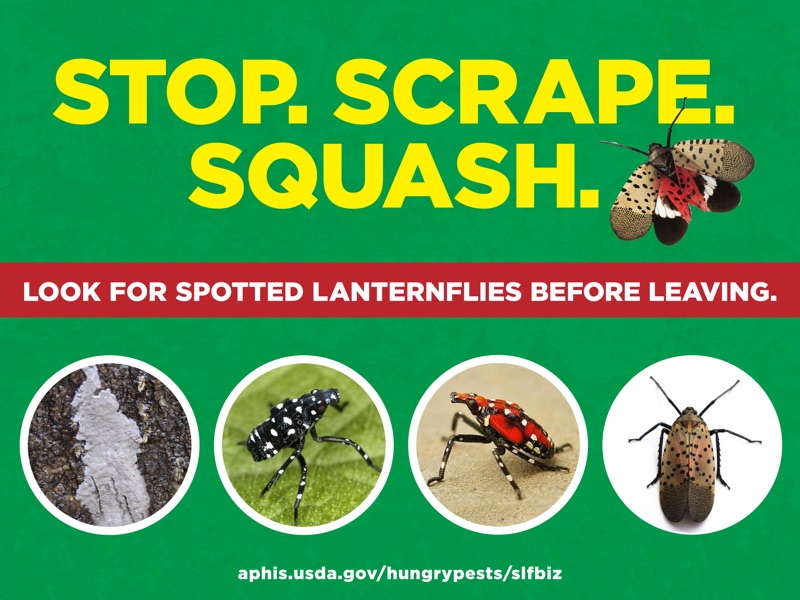
This sign is downloadable from the USDA website.
And squash them all — for the good of the forest and cicadas.
More info at the USDA website.
Long Island (NY), New Jersey, Pennsylvania, and nearby states are loaded with Lyme Disease carrying Blacklegged/Deer Ticks. I’ve known people who have Lyme Disease and it practically ruined their lives. Unfortunately, ticks are found in the same areas as cicadas, like parks, yards, and forests. The CDC website has tips for preventing tick bites on people that I highly recommend you read and follow their tips. I personally wear pyrethrum-treated clothes when outdoors in New Jersey.
From the CSC.gov website:
